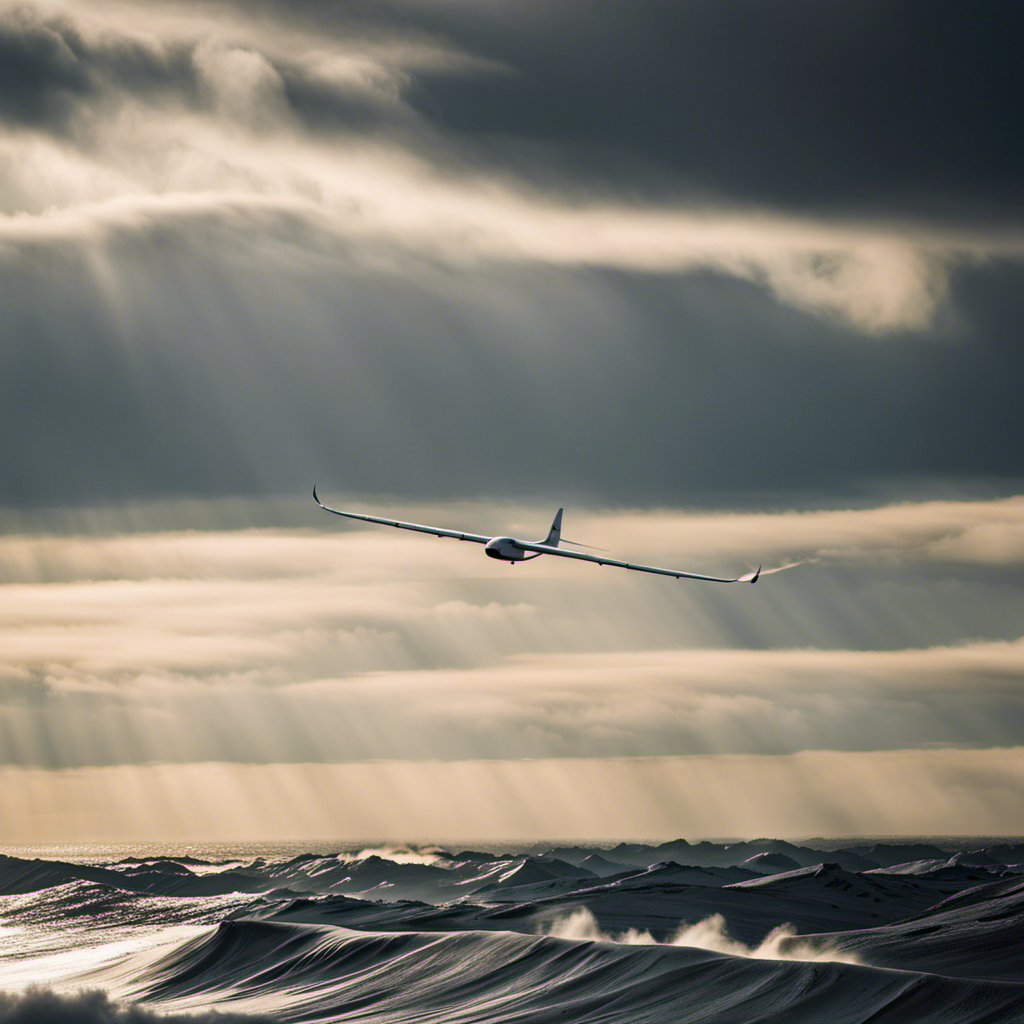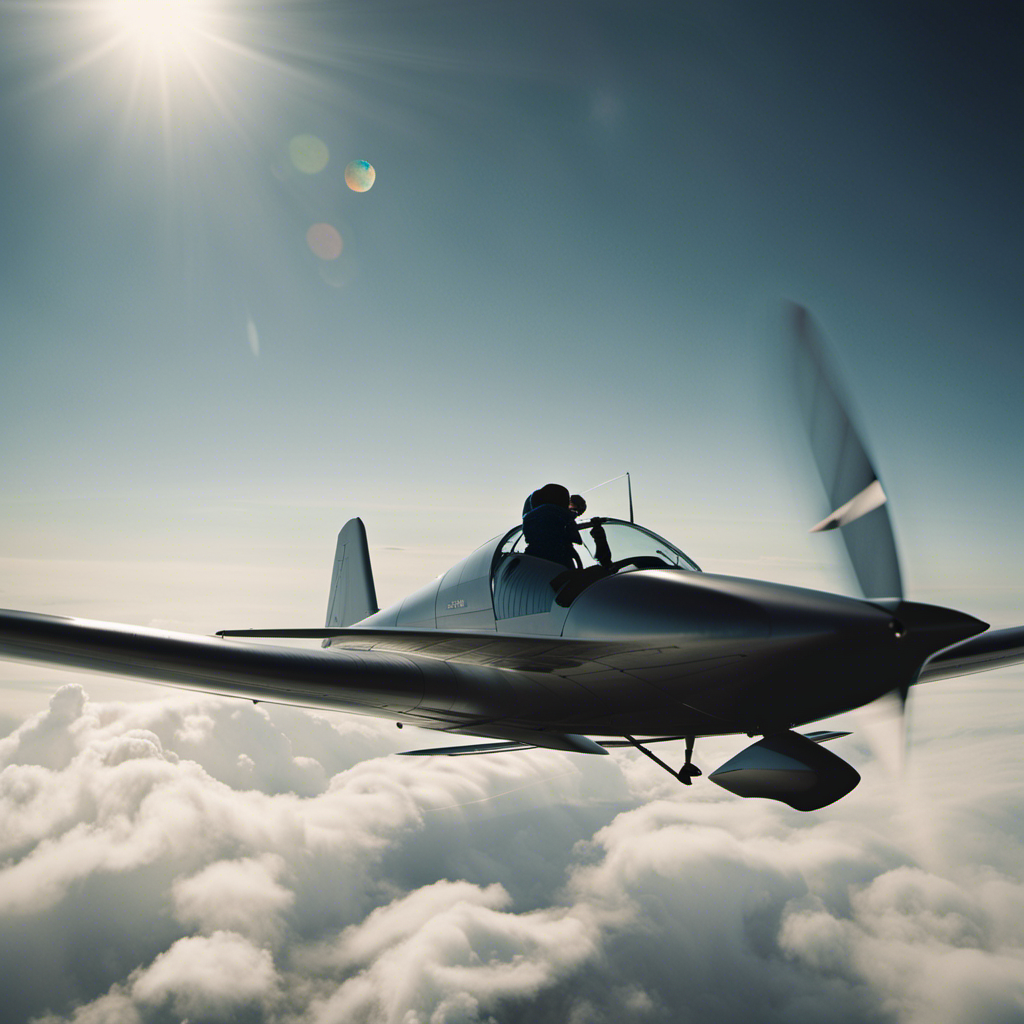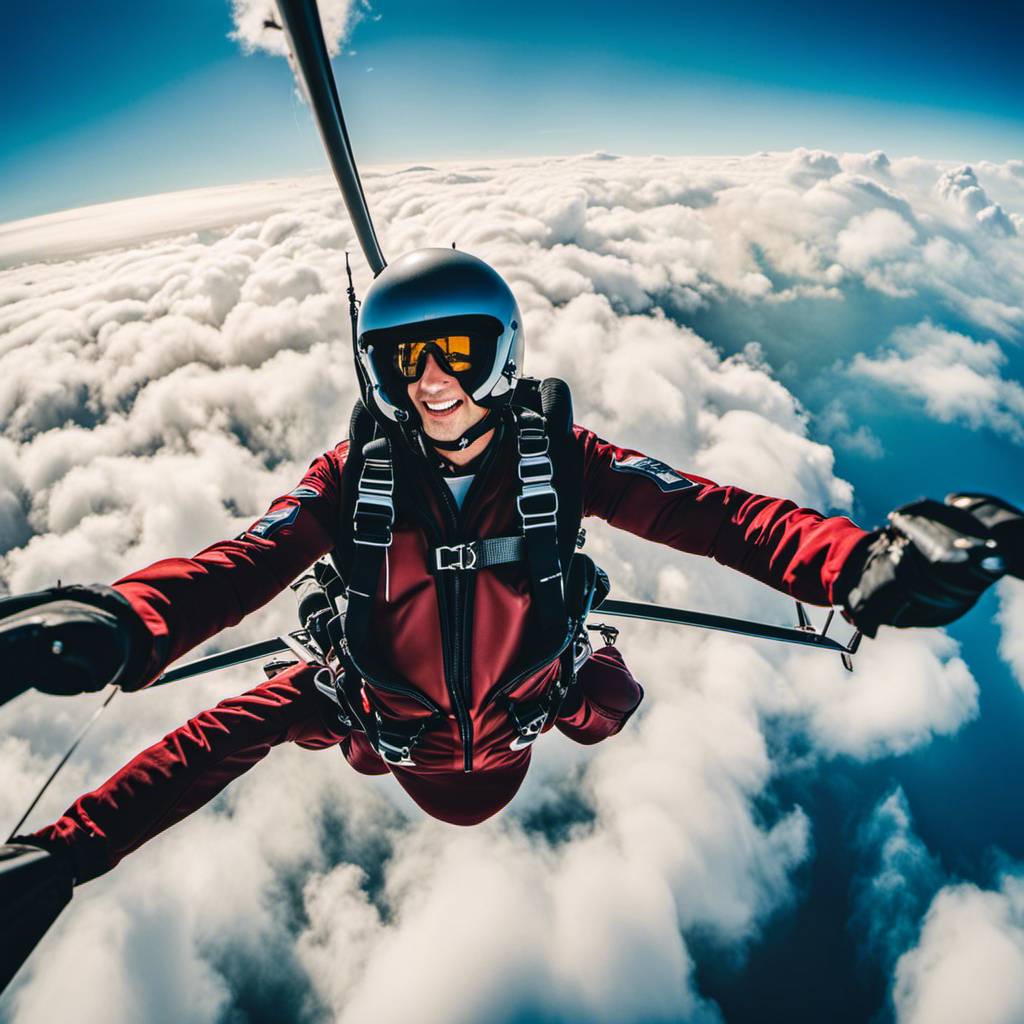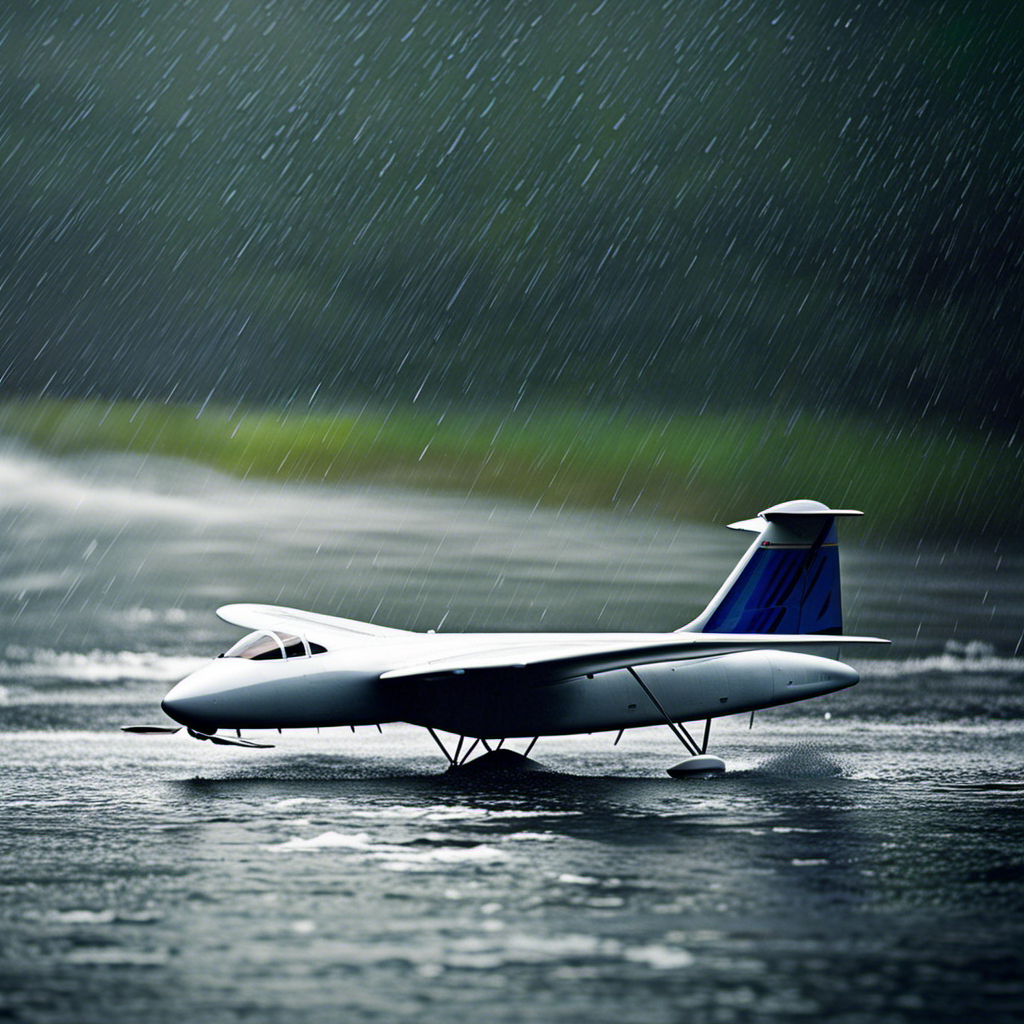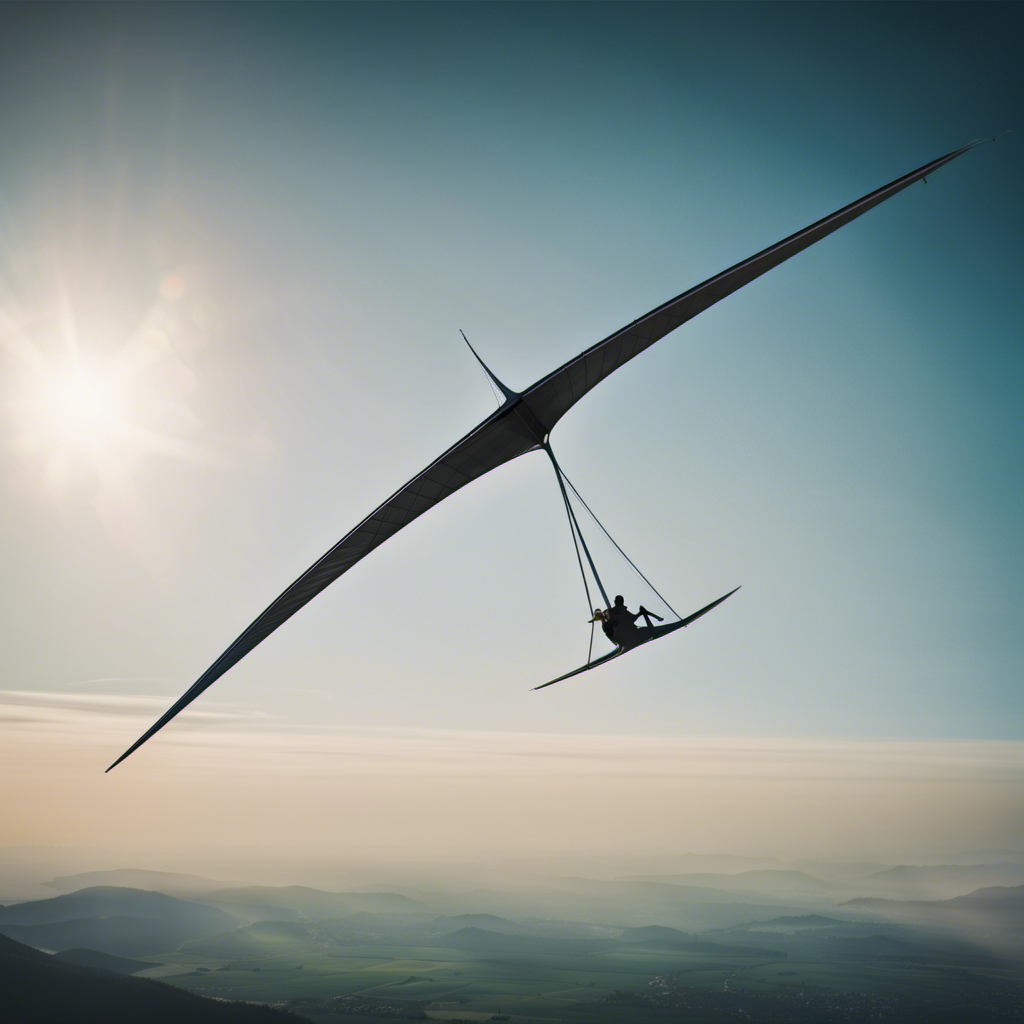As a glider pilot, I am constantly seeking out new challenges and chances to push the limits of gliding.
One technique that truly tests both skill and courage is glider wave soaring.
In this detailed look at the art of wave soaring, we will explore the intricacies of riding atmospheric waves, discuss the necessary equipment and preparation, and delve into advanced techniques that will take your soaring to new heights.
Get ready to experience the thrill and beauty of glider wave soaring like never before.
Key Takeaways
- Glider wave soaring involves using rising air currents to gain altitude and extend flight time.
- Different types of atmospheric waves exist, such as gravity waves and mountain waves, and they play a crucial role in shaping weather patterns and climate dynamics.
- High-performance gliders with good cross-country capabilities are essential for wave soaring, and observational skills are crucial for finding and riding waves.
- Advanced wave soaring techniques involve mastering wave energy and exploiting it for altitude gain and extended flight time, with safety considerations being important for dealing with unexpected situations.
The Basics of Glider Wave Soaring
The basics of glider wave soaring involve using rising air currents to gain altitude and extend flight time. Glider wave dynamics play a crucial role in this type of flying, as they create the necessary conditions for wave lift optimization.
Wave lift occurs when a glider encounters a standing wave in the atmosphere, caused by the interaction of wind with topographic features such as mountains or ridges. These waves can extend for hundreds of miles and provide gliders with a continuous source of lift.
To optimize wave lift, glider pilots must carefully analyze the atmospheric conditions and plan their flight accordingly. This involves understanding the wind direction and speed, as well as the shape and orientation of the terrain. By flying in the areas where the waves are most pronounced, pilots can maximize their altitude gain and increase their flight time.
Transitioning into the next section about understanding atmospheric waves, it is essential to comprehend the factors that influence their formation and behavior. By studying the properties of the atmosphere and the interactions between air masses, glider pilots can anticipate the occurrence and strength of wave lift, allowing them to make informed decisions during their flights.
Understanding Atmospheric Waves
When it comes to understanding atmospheric waves, it’s important to consider the different types of waves that exist, as well as their formation and characteristics.
Atmospheric waves can be categorized into various types, such as gravity waves, Rossby waves, and Kelvin waves, each with their own distinct features.
These waves are formed due to various factors, including temperature and pressure gradients, and they play a crucial role in shaping weather patterns and climate dynamics.
Types of Atmospheric Waves
Different types of atmospheric waves can impact the behavior of glider wave soaring. Two key types of waves that affect glider pilots are gravity waves and mountain waves.
Gravity waves are created when air is displaced vertically, causing it to oscillate up and down. These waves can be generated by various sources such as wind shear or frontal systems.
Mountain waves, on the other hand, are formed when air encounters a mountain range and is forced to rise over it. This lifting motion generates a wave-like pattern downstream of the mountain. These waves can extend for hundreds of miles and can provide ideal soaring conditions for glider pilots.
Understanding the formation and characteristics of these waves is crucial for successful wave soaring without relying on ‘step’ transitions.
Formation and Characteristics of Waves
To understand how waves are formed and their characteristics, you should pay attention to the displacement of air and the interaction with mountain ranges.
Waves are created through a process known as orographic lifting, where air is forced to rise as it encounters a mountain range. As the air rises, it cools and condenses, forming clouds and precipitation. This process creates a wave-like pattern in the atmosphere, with alternating areas of rising and sinking air.
The characteristics of these waves depend on various factors such as the height and shape of the mountains, as well as the stability of the atmosphere. Understanding these formation processes and wave characteristics is crucial for glider pilots, as it allows them to identify and utilize the rising air currents effectively.
Transitioning to the next section, proper equipment and preparation are essential for a successful glider wave soaring experience.
Equipment and Preparation
Before taking off, it’s important to ensure that all the necessary equipment is properly prepared. Equipment selection plays a crucial role in glider wave soaring. First and foremost, a high-performance glider with good cross-country capabilities is essential. It should be equipped with an altimeter, variometer, and a navigation system to aid in navigation and maintaining altitude. Additionally, a radio for communication with ground control and other gliders is necessary for safety.
Weather analysis is another key aspect of preparation. Prior to takeoff, it is crucial to assess the current weather conditions and forecast. A thorough understanding of the wind patterns, cloud formations, and temperature inversions will help determine the feasibility of glider wave soaring. By analyzing these factors, the pilot can identify areas with strong lift and favorable wave formations.
Transitioning into the subsequent section about launching techniques, the first step after equipment preparation and weather analysis is selecting an appropriate launching technique. This involves considering factors such as the wind direction and strength, runway availability, and pilot preference. The most common launching techniques for glider wave soaring include winch launches, aerotows, and self-launching. Each technique has its advantages and limitations, and the choice depends on the specific conditions and pilot experience.
Launching Techniques
Once you’ve prepared your equipment and analyzed the weather, the next step is selecting the most suitable launching technique for your glider wave soaring adventure. The choice of launching technique depends on various factors, including wind patterns and the type of wave you intend to ride. Let’s take a look at some common launching techniques and their advantages:
| Launching Technique | Description | Advantages |
|---|---|---|
| Aerotow | Being towed into the air by a powered aircraft | Allows for easy and controlled ascent to desired altitude |
| Winch Launch | Using a winch to generate the necessary speed for takeoff | Provides a quick and powerful launch |
| Auto-Tow | Using a motorized ground vehicle to tow the glider | Offers flexibility and independence in launching |
Each technique has its own benefits and considerations, so it’s important to choose the one that suits your needs and the prevailing wind conditions. Once you’ve successfully launched, it’s time to find and ride the waves, harnessing the power of the wind to keep your glider aloft. This requires a keen understanding of wind patterns and the ability to read the sky for signs of wave activity. By knowing where and how to find these invisible highways in the sky, you can extend your flight and experience the exhilaration of glider wave soaring.
Finding and Riding the Waves
When searching for waves to ride, keep an eye out for distinct cloud formations and changes in wind direction. Finding wave patterns is crucial for optimizing glider performance.
As a glider pilot, I rely on my observational skills to identify the telltale signs of wave lift. One important indicator is the presence of lenticular clouds, which form when moist air flows over mountains and creates standing waves. These clouds are often shaped like pancakes or saucers, and their formation indicates the presence of strong updrafts.
Another clue is changes in wind direction. When the wind abruptly shifts from a headwind to a tailwind, it suggests the presence of a wave system. By carefully observing these cloud formations and wind patterns, I can identify the most favorable areas for wave soaring. This knowledge allows me to optimize my glider’s performance and stay airborne for longer periods, maximizing the thrill and efficiency of my flight.
Understanding wave patterns is just the first step to flying in wave conditions; the next section will delve into the techniques required to make the most of this extraordinary phenomenon.
Flying in Wave Conditions
To optimize your performance while flying in wave conditions, be sure to thoroughly understand the techniques required for maximum efficiency.
Wave soaring is a unique type of flying that relies on exploiting rising air currents generated by the interaction between wind and mountains. These conditions can provide the opportunity for extended flight durations and increased altitude gains.
When flying in wave conditions, it is crucial to employ the appropriate techniques to make the most of the available lift. Firstly, it is important to accurately read the weather conditions and identify areas where wave lift is likely to occur. This requires an understanding of wind patterns, mountain topography, and meteorological forecasts.
Once in the air, maintaining the correct flying technique is essential. This includes adjusting your speed and attitude to maximize lift and minimize drag. Flying in a disciplined manner and making smooth, coordinated turns will help you stay within the core of the wave and extract the most energy from it.
By mastering these flying techniques and adapting to the unique weather conditions associated with wave soaring, you can enhance your performance and enjoy the exhilarating experience of gliding through the air with precision and efficiency.
Transitioning into the subsequent section about communication and navigation, effective communication with ground support and accurate navigation are crucial elements in ensuring a safe and successful wave soaring flight.
Communication and Navigation
When it comes to communication and navigation in aviation, it’s crucial to understand and follow proper radio procedures and etiquette. This ensures clear and effective communication with air traffic control and other pilots.
Additionally, the use of GPS and instruments for navigation provides accurate and reliable information for flight planning and navigation. This enhances safety and efficiency in the skies.
Radio Procedures and Etiquette
Make sure you familiarize yourself with radio procedures and etiquette when engaging in glider wave soaring. Communication is essential for safety and coordination with other pilots and air traffic controllers. Here are four important points to remember:
-
Use clear and concise language: Speak slowly and enunciate clearly to ensure your message is understood by others.
-
Identify yourself: Always start your radio transmission with your call sign to avoid confusion.
-
Listen before transmitting: Take the time to listen to the radio frequency to avoid interrupting ongoing communications.
-
Keep transmissions brief: Be efficient with your communication, providing only essential information to avoid overcrowding the frequency.
Now, let’s move on to using GPS and instruments for navigation.
Using GPS and Instruments for Navigation
Using GPS and instruments for navigation is crucial during glider wave soaring, as they provide you with accurate information about your location and help you plan your flight path effectively. GPS technology allows glider pilots to determine their precise coordinates and track their progress in real-time. Navigation instruments, such as altimeters, variometers, and compasses, are essential for maintaining altitude, detecting thermals, and ensuring proper heading. These instruments enable pilots to make informed decisions during flight, maximizing their chances of finding and riding the elusive waves in the atmosphere. To give you a visual representation, consider the following table:
| Instrument | Purpose | Example |
|---|---|---|
| GPS | Position tracking | Garmin GPSMAP 64st |
| Altimeter | Altitude measurement | Winter Altimeter 2 |
| Variometer | Vertical speed detection | LXNAV V9 |
| Compass | Heading indication | Suunto A-10 Compass |
Mastering the use of GPS technology and navigation instruments is essential for successful wave soaring. Now, let’s delve into more advanced wave soaring techniques.
Advanced Wave Soaring Techniques
To enhance your wave soaring skills, you’ll need to master advanced techniques. These techniques involve mastering wave energy and understanding how to exploit it to gain altitude and extend your flight time.
One important technique is known as ‘staying in the sweet spot.’ This involves positioning your glider in the area of the wave where the lift is strongest and most consistent. By constantly adjusting your flight path and staying in the optimal position, you can maximize your altitude gain.
Another technique is ‘riding the wave front.’ This involves flying just ahead of the wave crest, where the lift is strongest. By carefully monitoring the wave’s movement and adjusting your flight path accordingly, you can stay in this high lift zone and continue to gain altitude.
Additionally, ‘thermal hunting’ can be used to supplement wave energy. By searching for thermals near the wave system, you can gain additional altitude and prolong your flight.
These advanced techniques require a deep understanding of wave dynamics and precise flying skills. Mastering them will greatly enhance your wave soaring abilities.
Now let’s transition to the next section, which focuses on safety considerations and emergency procedures.
Safety Considerations and Emergency Procedures
When it comes to wave soaring, it’s crucial to be prepared for unexpected situations. This includes wave shutdowns, emergency landings, and bailouts.
Dealing with wave shutdowns requires quick thinking and the ability to adjust your flight path. You need to find alternative sources of lift to keep your glider in the air.
In the event of an emergency landing or bailout, it’s important to have a thorough understanding of emergency procedures. You should also be proficient in executing them. This can make the difference between a safe outcome and a dangerous situation.
Dealing with Wave Shutdowns
If you encounter a wave shutdown while glider wave soaring, you’ll need to quickly adjust your flight path and find another area of lift. Dealing with turbulence and strategies for wave recovery are crucial in these situations. Here are four important steps to follow:
-
Stay calm and maintain control of the glider. It’s essential to stay focused and not panic, as this could lead to further complications.
-
Assess the situation and look for visual cues. Pay attention to cloud formations, wind patterns, and the behavior of other gliders in the area. This can help you identify potential areas of lift.
-
Adjust your flight path and search for alternative sources of lift. This might involve changing altitude, heading, or even exploring different parts of the wave system.
-
Keep an eye on your altitude and energy management. Ensure that you have enough altitude to safely navigate to a new area of lift or perform an emergency landing if needed.
By following these strategies, you can effectively recover from a wave shutdown and continue your glider wave soaring adventure.
Now, let’s discuss emergency landings and bailouts without skipping a beat.
Emergency Landings and Bailouts
Stay vigilant and keep an eye on your surroundings for potential landing spots in case of an emergency during your glider wave soaring adventure. Accident prevention and knowing emergency protocols are crucial in ensuring a safe and enjoyable experience. In the event of a problem, it is essential to have a plan in place. Here is a three-column, three-row table outlining key steps to take during an emergency landing or bailout:
| Step | Action | Reason |
|---|---|---|
| 1 | Assess the situation | Determine the severity of the emergency and available options |
| 2 | Locate suitable landing areas | Identify potential spots for a safe landing |
| 3 | Execute emergency landing | Safely bring the glider down and follow proper procedures |
The Thrill and Beauty of Glider Wave Soaring
Experience the thrill and witness the breathtaking beauty of glider wave soaring. Glider wave soaring is an exhilarating and serene experience that allows you to soar through the air without the need for an engine. As a glider pilot, I have had the opportunity to explore the wonders of this unique form of flying.
One of the most remarkable aspects of glider wave soaring is the sense of serenity it provides. As you glide through the air, you are surrounded by the peacefulness and tranquility of nature. The absence of engine noise allows you to fully immerse yourself in the experience, connecting with the elements around you.
In addition to the serenity, glider wave soaring also offers the perfect opportunity to capture breathtaking aerial photographs. The vantage point from the glider allows for stunning views of the landscape below. With a camera in hand, I have been able to capture incredible shots of mountains, lakes, and forests from a unique perspective. The combination of the soaring sensation and the ability to capture these awe-inspiring photographs creates an unforgettable experience.
Glider wave soaring truly is a remarkable adventure that combines the thrill of flight with the beauty of nature. It is an experience that every aviation enthusiast should have the opportunity to try. Soaring through the sky, experiencing serenity, and capturing breathtaking photographs – glider wave soaring offers a truly unforgettable journey.
Frequently Asked Questions
What are the different types of glider wave soaring techniques?
Differentiating techniques in glider wave soaring include ridge lift, lee wave, and mountain wave. Each technique requires specific skills and knowledge to optimize flight in different weather conditions.
How do glider pilots communicate with each other during wave soaring flights?
During wave soaring flights, glider pilots communicate with each other using radio transmissions. They exchange information about weather conditions, wave patterns, and potential hazards. Clear and concise communication is crucial for maintaining situational awareness and ensuring safe flights.
What are some common emergency procedures and safety considerations in glider wave soaring?
In glider wave soaring, it’s crucial to have a solid understanding of emergency procedures and safety considerations. From conducting pre-flight inspections to knowing how to handle unexpected weather changes, being prepared is key to a successful and safe flight.
Can glider wave soaring be done in all types of weather conditions?
Glider wave soaring can only be done in specific weather conditions. Extreme weather conditions can affect the efficiency of glider wave soaring techniques. It is important to consider weather conditions for a successful flight.
How long does it typically take for a glider pilot to become proficient in wave soaring techniques?
It typically takes several years for a glider pilot to become proficient in wave soaring techniques. The glider wave soaring learning curve involves factors such as experience, weather conditions, and training.
Conclusion
In conclusion, glider wave soaring is a thrilling and awe-inspiring pursuit that allows pilots to harness the power of atmospheric waves. By understanding the science behind these waves and employing proper equipment and techniques, glider pilots can experience the freedom and beauty of soaring through the sky.
With each flight, they are able to witness breathtaking vistas and feel the exhilaration of riding nature’s roller coaster. Glider wave soaring truly is the epitome of adventure, taking flying to new heights and leaving a lasting impression on all who experience it.
With a heart that soars as high as the skies, Aria, affectionately known as “Skylark,” is the driving force behind Soaring Skyways. Her journey into the gliding world began as a young dreamer gazing up at the soaring birds, yearning to experience the weightlessness and freedom they embodied. With years of experience both in the cockpit and behind the scenes, Aria’s commitment to the gliding community is unwavering.
